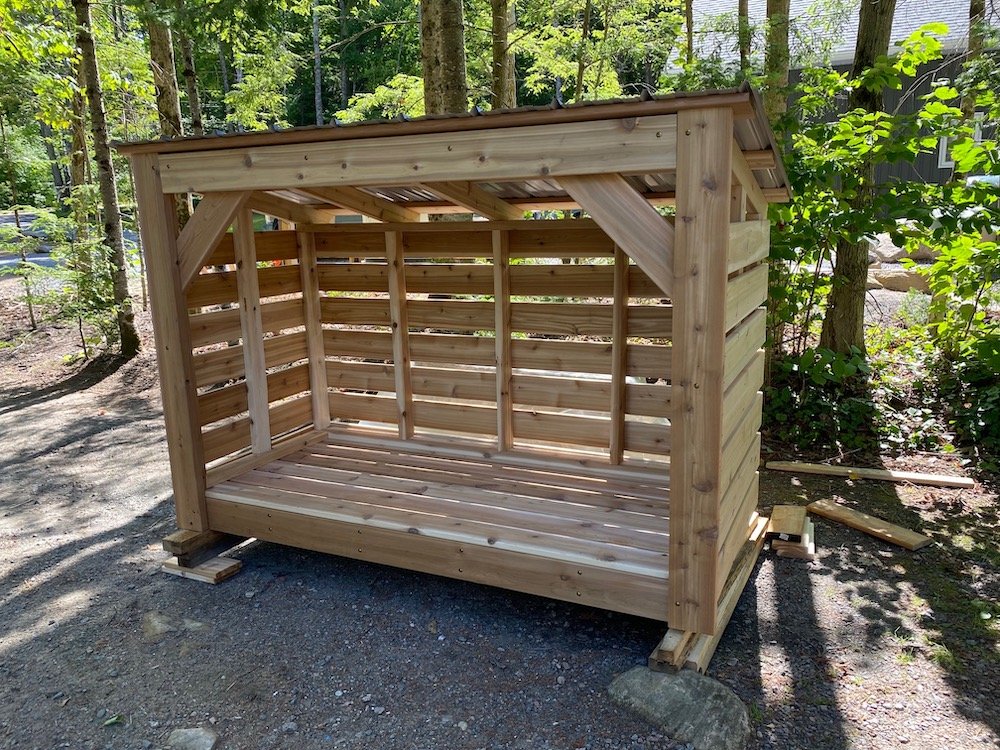

Introduction:
As winter approaches, ensuring a steady supply of seasoned firewood is essential for keeping your home warm and cozy. In this guide, we’ll explore the DIY process of maintaining and storing firewood, helping you prepare for the colder months ahead.
Selecting the Right Firewood:
The first step in the process is choosing the right type of firewood. Hardwoods such as oak, maple, and birch are excellent choices as they burn longer and produce more heat. Softwoods like pine and spruce are suitable for kindling but burn faster. Select a mix of hardwoods and softwoods for efficient and controlled burning.
Proper Cutting and Splitting Techniques:
If you’re cutting your own firewood, proper techniques are crucial. Use a chainsaw or a maul and axe for cutting, and ensure the pieces are of uniform size for easier stacking and burning. Split the wood into manageable sizes, allowing for better air circulation and faster seasoning.
Seasoning the Firewood:
Seasoning is the process of drying the wood to reduce its moisture content. Freshly cut wood contains a high moisture content, making it difficult to burn efficiently. Ideally, firewood should be seasoned for at least six months to a year. Stack the wood in a dry and well-ventilated area, ensuring it is off the ground to prevent moisture absorption.
Creating an Adequate Storage Area:
The storage area plays a crucial role in maintaining the quality of firewood. Build or designate a dedicated firewood storage area that protects the wood from rain and snow. A covered woodshed or a purpose-built firewood rack can help keep the firewood dry and ready for use.
Stacking Firewood Properly:
Efficient stacking is not just about aesthetics; it promotes proper seasoning and airflow. Stack the firewood with the split sides facing outward to allow air circulation. Create a stable and organized woodpile to prevent collapsing and make it easier to retrieve wood when needed.
Protecting Firewood from the Ground:
Direct contact with the ground can introduce moisture to the firewood, hindering the seasoning process. Place a layer of pallets, bricks, or other materials on the ground before stacking the wood. Elevating the firewood prevents it from absorbing moisture and helps maintain its quality.
Covering Firewood During Inclement Weather:
While proper stacking provides some protection, covering the firewood during heavy rain or snow is essential. Use a tarp or a dedicated firewood cover to shield the woodpile from the elements. Ensure the covering extends beyond the sides to safeguard against wind-driven rain or snow.
Regular Inspections and Maintenance:
Periodic inspections are necessary to ensure the stored firewood remains in good condition. Check for signs of pests, mold, or decay. Remove any damaged or compromised pieces promptly to prevent issues from spreading. Regular maintenance contributes to a consistently high-quality firewood supply.
Utilizing Firewood Rotation:
To ensure you are using the oldest and driest wood first, practice firewood rotation. When replenishing your firewood storage, place the new pieces at the back of the stack. This rotation system ensures you consistently use well-seasoned wood for optimal burning efficiency.
Safe and Efficient Use:
Finally, when using the stored firewood, prioritize safety. Store only a small amount indoors to prevent insect or mold issues. Keep larger quantities in the outdoor storage area, and bring in only what you need for immediate use. This approach ensures the longevity and quality of your firewood supply.
In conclusion, maintaining and storing firewood yourself is a rewarding and cost-effective endeavor. By following these DIY tips, you can ensure a steady supply of high-quality, seasoned firewood for a warm and inviting home during the winter months. For more detailed guidance and additional tips on firewood management, visit mimimises.org.
